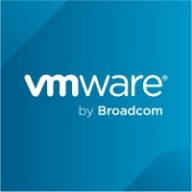

DX Unified Infrastructure Management and VMware vCenter are leading infrastructure management solutions. VMware vCenter has superior features, but DX Unified Infrastructure Management offers better pricing and support.
Features: Users appreciate the extensive monitoring capabilities and easy integration of DX Unified Infrastructure Management. VMware vCenter is praised for its comprehensive virtualization features. VMware vCenter stands out for its advanced and rich feature set.
Room for Improvement: DX Unified Infrastructure Management users desire more intuitive configuration options. VMware vCenter users seek enhancements in patch management and performance monitoring. DX Unified Infrastructure Management needs better configuration flexibility, whereas VMware vCenter needs improvements in specific management features.
Ease of Deployment and Customer Service: DX Unified Infrastructure Management offers simpler deployment and highly responsive customer service. VMware vCenter has a more complex deployment but provides excellent technical support. DX Unified Infrastructure Management is quicker to deploy, but VMware vCenter provides robust support.
Pricing and ROI: DX Unified Infrastructure Management provides better initial pricing and a quicker return on investment. VMware vCenter, though more costly, is considered worth the price by users due to its robust features. DX Unified Infrastructure Management is more cost-effective, but VMware vCenter justifies its higher cost with its feature set.
Improving direct support for end customers, similar to Microsoft’s model, would be beneficial.
VMware vCenter manages high availability effectively.
The technical support is good.
The solution helps with capacity management, enabling us to determine when we need to scale up the network.
On a scale of one to ten, I would rate its scalability as ten.
The scalability is good in vCenter.
The solution is completely scalable as we can increase any host with great simplicity.
We have not faced any issues after upgrading VMware vCenter, whether on the vCenter or any host.
Better support and more accessible resources are crucial.
The licensing model has shifted, leading to higher costs, particularly for smaller organizations.
The license cost has increased significantly, which is the primary negative aspect of VMware vCenter.
Better redundancy options can be achieved by using multiple vCenter machines.
The pricing of DX Unified Infrastructure Management is high and often a concern for customers.
The licensing model now requires purchasing 96-core solutions, even if fewer cores are needed, adding to the cost burden.
DX Unified Infrastructure Management offers visibility into network activities, integration capacity, and enhances monitoring at the core and application levels.
High availability is employed so if an ESXi server is down, the VM is supported on another ESXi on other servers.
The high availability feature is particularly valuable when a host goes down or experiences high usage, as it automatically migrates VMs to other hosts to balance performance.
VMware vCenter is excellent for managing and monitoring hypervisors, specifically with features like live migration, storage vMotion, and host vMotion.
| Product | Market Share (%) |
|---|---|
| VMware vCenter | 1.0% |
| DX Unified Infrastructure Management | 1.0% |
| Other | 98.0% |


| Company Size | Count |
|---|---|
| Small Business | 29 |
| Midsize Enterprise | 20 |
| Large Enterprise | 80 |
| Company Size | Count |
|---|---|
| Small Business | 15 |
| Midsize Enterprise | 5 |
| Large Enterprise | 18 |
DX Unified Infrastructure Management is the only solution that provides an open architecture, full-stack observability and zero-touch configuration for monitoring traditional data center, public cloud, and hybrid infrastructure environments.
Designed to ensure an optimal end-user experience, this solution provides a modern HTML5 operations console that makes it easy and fast for today’s IT teams to implement, use, and scale – leading to faster time to value.
VMware vCenter provides centralized management for virtual machines, offering enhanced resource control, high availability, and data protection. Its integration with NSX and vSAN simplifies infrastructure management, although improvements in pricing, licensing, and technical support are needed.
VMware vCenter streamlines the management of virtual infrastructures, facilitating scalability and elasticity through features like DRS, vMotion, and snapshot capabilities. While users appreciate its centralized control and extensive integration options, complexities in interface and upgrades are seen as challenges. Issues like fragmented licensing, difficult Fault Tolerance management, and high resource demands have been highlighted, alongside the need for enhanced security, monitoring, and seamless cloud integration. vCenter is widely used in data centers for overseeing large virtual environments, integrating cloud services, and providing infrastructure as a service.
What are the main features of VMware vCenter?
What benefits and ROI should users expect?
Industries such as IT, finance, healthcare, and government deploy VMware vCenter to manage their extensive virtual environments. Users rely on its automation and centralized management capabilities to ensure high performance and uptime in data center operations, often leveraging it to integrate with cloud services.
We monitor all Server Monitoring reviews to prevent fraudulent reviews and keep review quality high. We do not post reviews by company employees or direct competitors. We validate each review for authenticity via cross-reference with LinkedIn, and personal follow-up with the reviewer when necessary.